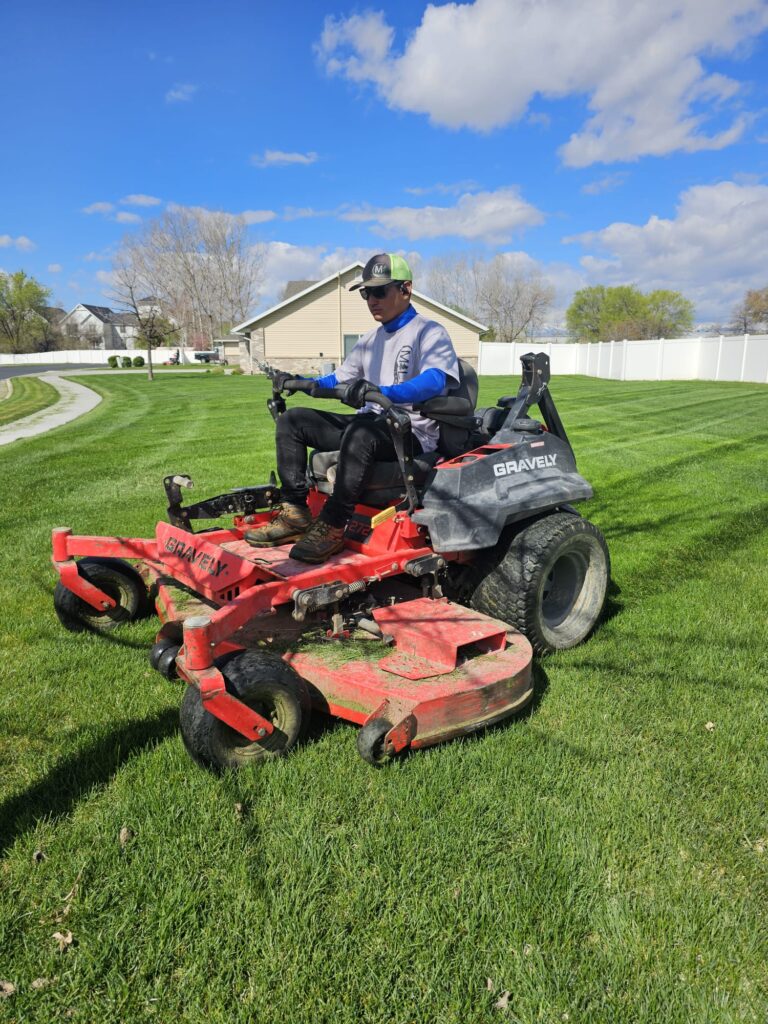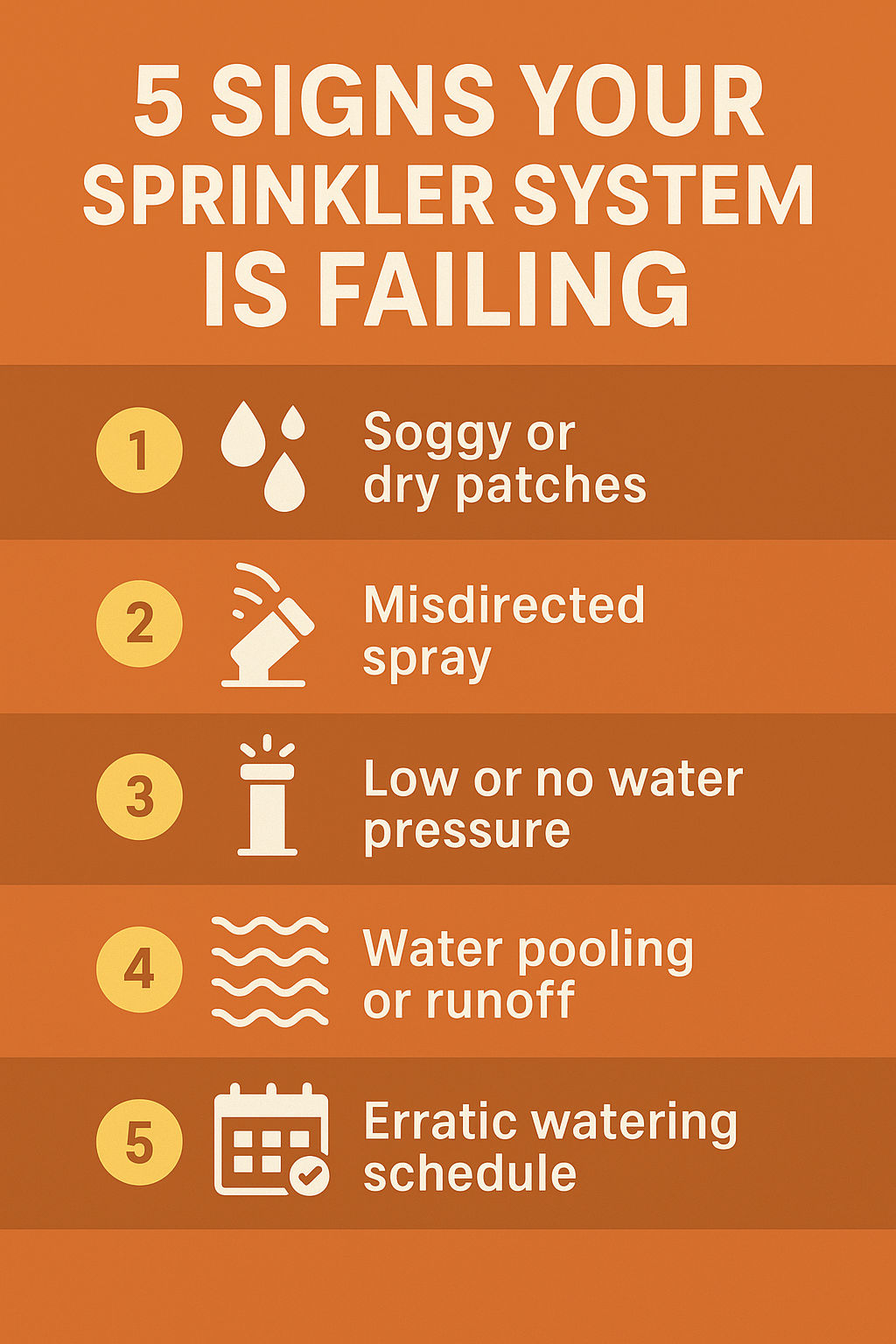Sprinkler systems are supposed to make life easier. But in Eagle Mountain, Utah, where summer heat and drought conditions put lawns under serious stress, a silent sprinkler failure can cost you more than you think—dead grass, sky-high water bills, and even property damage.
The real problem? Most issues stay hidden until it’s too late.
In this post, we’ll reveal:
- The most common sprinkler system problems Utah homeowners miss
- Early warning signs your system is failing
- Why these issues are worse in high-altitude, dry-climate zones like Eagle Mountain
- Easy tests and fixes you can do now
Why Sprinkler Failures Are So Common in Eagle Mountain
Related long-tail keyword: sprinkler system problems Utah homeowners miss
Your sprinkler system works underground, which means it often fails silently. And in Utah’s arid climate, even a few days without proper irrigation can mean lasting damage.
Here’s why issues are so common in our region:
- High water pressure can stress valves and blow seals
- Hard soil makes underground leaks harder to detect
- Alkaline-heavy water can clog heads and filters
- Extreme temperature swings damage exposed lines
And unlike visible yard problems, sprinkler malfunctions don’t make a sound—until your lawn turns yellow.
5 Things Your Sprinkler System Isn’t Telling You
Related long-tail keyword: how to test lawn irrigation system
1. “You’ve Got a Hidden Leak That’s Wasting Water”
Leaks underground don’t create puddles. Instead, they saturate the soil beneath the surface—causing root rot, soil compaction, and water waste. A 1/32” crack can waste 6,300 gallons/month.
Test it:
Watch for soft, spongy spots in your yard. Or check your water bill—if it spikes, but usage habits haven’t changed, a leak might be to blame.
2. “Your Coverage Zones Are Off—By Feet, Not Inches”
If your system isn’t calibrated, some zones get drenched while others dry out. Over time, this creates unhealthy turf patterns and weakens root structure.
Fix it:
Run a zone test. Place empty tuna cans throughout the yard and time a 15-minute cycle. If water levels differ more than ¼ inch, you have a coverage problem.
3. “I’m Spraying the Sidewalk. Again.”
Misaligned sprinkler heads waste water and reduce efficiency by up to 30%—a major issue in water-restricted areas of Utah.
Visual clue:
Look for dry strips along the lawn edges or water runoff across concrete. Realign spray heads and clean clogged nozzles regularly.
4. “I Only Work at Night. You Should Be Checking Me in the Day.”
Most systems run before sunrise—meaning you rarely see them in action. If a head is stuck, blocked, or not popping up, you won’t know until your lawn shows damage.
Solution:
Manually run each zone once per month during daylight hours. It takes 10 minutes and can save hundreds.
5. “Your Schedule Was Set in Spring—But It’s 102° Now.”
Most homeowners never update their watering schedule, even as Utah heatwaves intensify. But your lawn’s water needs increase dramatically in July and August.
Update tip:
Adjust runtime based on soil moisture and sun exposure. Use deep watering 2–3x per week rather than daily misting.
The Cost of Ignoring Sprinkler Problems
Related long-tail keyword: water-saving lawn care tips Utah
Letting these problems go unnoticed can lead to:
- Brown patches that require reseeding or sodding ($300–$1,000)
- Overwatering fines (if you’re on a meter or HOA schedule)
- Higher utility bills
- Soil damage that leads to permanent turf loss
It’s not just a maintenance issue—it’s a home value issue.
How to Check Your System in 15 Minutes or Less
Set aside a morning to do this quick sprinkler audit:
- Manually run each zone
- Check for:
- Head alignment
- Full pop-up
- Equal spray coverage
- Leaks or bubbling water
- Clean clogged heads with a toothbrush and vinegar
- Adjust timers and test coverage with tuna cans
- Log problem areas and fix or call a pro
Don’t want to deal with it? Our team at Saratoga Mowing handles full irrigation checks, adjustments, and turf repair across Eagle Mountain.
Frequently Asked Questions
Q: How often should I inspect my sprinkler system?
A: Once per month during active use (April–October), plus a full inspection at spring startup and fall shutdown.
Q: How do I know if I’m overwatering?
A: Mushy turf, mushrooms, or runoff indicate too much water. Water 2–3x weekly for longer durations instead of daily.
Q: What’s the best time to water in Utah?
A: Early morning (4–8 a.m.) is best to reduce evaporation and fungal risk.
Q: Can a bad sprinkler system ruin my whole lawn?
A: Yes. Even one broken zone can cause large dead patches or root rot in weeks—especially during a Utah heatwave.

Don’t Wait Until It’s Too Late—Protect Your Lawn Now
Your sprinkler system may look fine from the surface. But underground issues can cost you hundreds—and kill your lawn’s health before you even see the signs.
Saratoga Mowing offers expert lawn and irrigation services tailored to Eagle Mountain’s climate. Whether it’s a seasonal sprinkler checkup or a full system tune-up, we help Utah homeowners prevent lawn damage before it starts.
Book your sprinkler system inspection now and get peace of mind all summer long.


